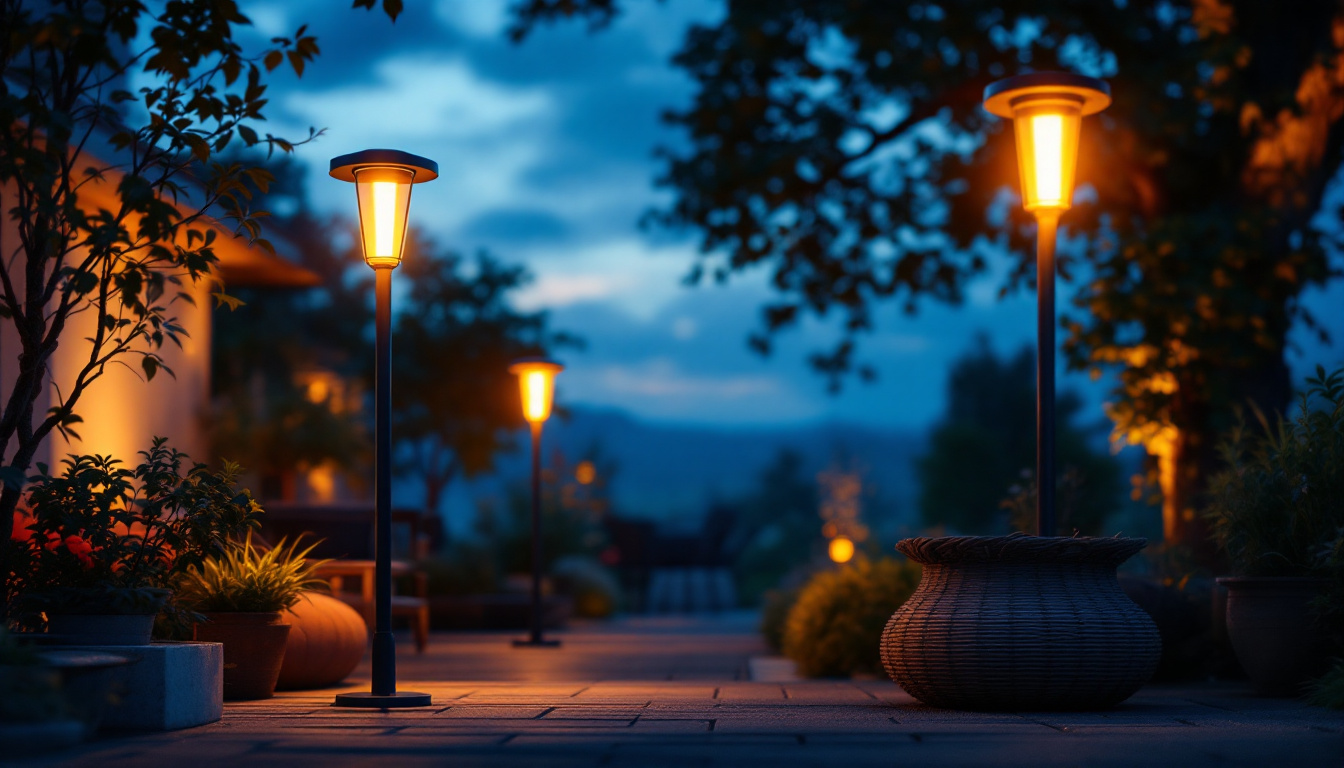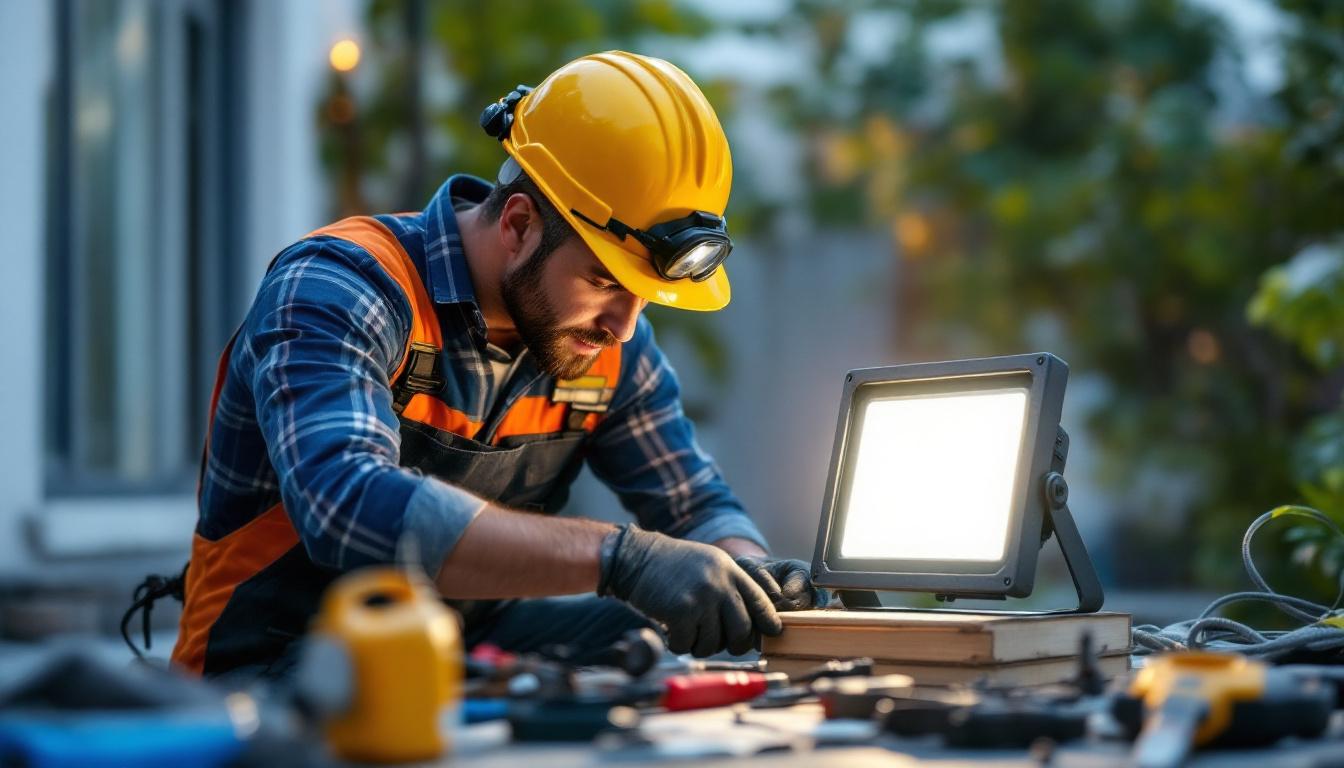
As the demand for enhanced home security continues to rise, lighting professionals play a crucial role in providing effective solutions. Household security lights not only deter potential intruders but also enhance the aesthetic appeal of a property. This article serves as an essential checklist for lighting professionals, covering key considerations, types of security lights, installation tips, and maintenance practices.
Security lighting is a fundamental aspect of home safety. It serves to illuminate dark areas, making it more difficult for intruders to approach undetected. Well-placed lighting can significantly reduce crime rates in residential neighborhoods, providing peace of mind to homeowners. Additionally, the presence of security lighting can foster a sense of community, as neighbors feel more secure knowing that their surroundings are well-lit and monitored. This collective vigilance can lead to stronger neighborhood ties and a proactive approach to safety.
Moreover, security lights can enhance the overall ambiance of a property. When designed effectively, they not only serve a functional purpose but also elevate the aesthetic appeal of the home. This dual functionality is essential for lighting professionals to consider when recommending solutions to clients. For instance, using warm-toned lights can create a welcoming atmosphere, while cooler tones might be employed in more modern settings. Homeowners can also opt for motion-sensor lights that not only save energy but also provide an element of surprise for any potential intruders, further enhancing security.
One of the primary functions of security lighting is deterrence. Bright, strategically placed lights can discourage potential intruders by increasing the risk of detection. Areas that are well-lit are less appealing to criminals, as they are more likely to be seen and caught. Furthermore, integrating smart lighting systems that can be controlled remotely adds an extra layer of security; homeowners can simulate occupancy by programming lights to turn on and off at various intervals, making it appear as though someone is home even when they are away.
Visibility is another critical factor. Proper lighting allows homeowners to see who is approaching their property, whether it’s a visitor or an unwelcome guest. This capability is particularly important during nighttime hours when visibility is limited. Installing lights along pathways, driveways, and entry points not only enhances safety but also guides guests to the front door, creating a welcoming experience. Additionally, incorporating features such as adjustable brightness and color temperature can help tailor the lighting to different situations, ensuring that the home remains both secure and inviting at all times.
When it comes to security lighting, there are several types available, each with its unique features and benefits. Understanding these options enables lighting professionals to recommend the best solutions for their clients’ specific needs.
motion sensor lights are an excellent choice for security purposes. These lights activate when they detect movement, providing illumination only when necessary. This feature not only conserves energy but also surprises potential intruders, making them think twice about their actions.
Additionally, motion sensor lights can be adjusted to reduce false alarms. Professionals can set the sensitivity levels to ensure that only significant movements trigger the lights, minimizing unnecessary activations from pets or wildlife. Some advanced models even come equipped with smart technology that allows homeowners to receive alerts on their smartphones when motion is detected, adding an extra layer of convenience and security.
Flood lights are powerful and provide a broad beam of light, making them ideal for illuminating large areas. They are often used to light up driveways, backyards, and entryways. The intensity of flood lights can create a sense of safety and security, as they leave little room for shadows.
When installing flood lights, it is essential to consider the beam angle and the height at which they are mounted. Proper placement ensures maximum coverage and effectiveness in deterring intruders. Additionally, many flood lights now come with features such as dusk-to-dawn sensors, which automatically turn the lights on at sunset and off at sunrise, ensuring that properties are always well-lit during the night without requiring manual intervention.
Solar-powered security lights are an eco-friendly option that harnesses the sun’s energy. They are particularly advantageous in areas without easy access to electrical outlets. These lights typically come with built-in batteries that store energy for nighttime use.
While solar lights can be cost-effective and easy to install, lighting professionals should advise clients about their limitations, such as reduced brightness during cloudy days or shorter operational times in winter months. However, advancements in solar technology have led to the development of more efficient solar panels and brighter LED bulbs, allowing these lights to perform better in less-than-ideal weather conditions. Furthermore, many solar-powered options now include motion sensors and adjustable settings, making them versatile enough to meet various security needs while remaining sustainable.
When selecting security lights, several key features should be taken into account. These features not only enhance the functionality of the lights but also improve the overall security of the property.
The brightness of security lights is measured in lumens. Higher lumen ratings indicate brighter lights, which are essential for effective security. Lighting professionals should assess the specific needs of the property to recommend appropriate lumen levels.
For instance, areas that require high visibility, such as driveways or entrances, may benefit from lights with higher lumen outputs, while pathways may only need moderate brightness to ensure safety.
Adjustable lights allow homeowners to direct the beam where it is needed most. This feature is particularly useful for flood lights and spotlights, as it enables customization based on the layout of the property. Lighting professionals should consider the landscape and architectural features when recommending adjustable options.
Additionally, directionality can help minimize light pollution and avoid disturbing neighbors. Properly aimed lights can enhance security while maintaining good relationships within the community.
With the rise of smart home technology, integrating security lights with smart systems has become increasingly popular. Smart security lights can be controlled remotely via smartphones or tablets, allowing homeowners to manage their lighting from anywhere.
Furthermore, these lights can be programmed to turn on and off at specific times or triggered by motion sensors. Lighting professionals should stay informed about the latest smart technology trends to provide clients with the most advanced solutions.
Proper installation of security lights is crucial for their effectiveness. Lighting professionals should adhere to specific best practices to ensure optimal performance and safety.
The placement of security lights can significantly impact their effectiveness. Lights should be installed in areas that are most vulnerable to intrusion, such as entry points, garages, and dark corners of the property. A well-thought-out lighting plan can enhance visibility and deter potential threats.
Additionally, it’s essential to avoid placing lights too high, as this can reduce their effectiveness. A height of 6 to 8 feet is often recommended for motion sensor and flood lights to maximize coverage.
For wired security lights, ensuring proper electrical connections is vital. Lighting professionals should follow local electrical codes and regulations when installing lights. This includes using appropriate wiring, circuit breakers, and ensuring that the installation can handle the wattage of the lights.
For solar-powered lights, professionals should ensure that the solar panels receive adequate sunlight throughout the day. This consideration is crucial for maintaining the lights’ functionality and longevity.
After installation, it is essential to test the security lights to ensure they function correctly. This includes checking motion sensors, adjusting brightness levels, and ensuring that the lights cover the intended areas. Making necessary adjustments post-installation can enhance the overall effectiveness of the security lighting system.
Regular maintenance of security lights is crucial to ensure their longevity and effectiveness. Lighting professionals should educate homeowners on proper maintenance practices to keep their security systems in optimal condition.
Dust, dirt, and debris can accumulate on security lights, reducing their brightness and effectiveness. Regular cleaning of the fixtures, lenses, and solar panels (if applicable) is essential for maintaining optimal performance. Homeowners should be advised to use a soft cloth and mild detergent for cleaning.
Additionally, checking for any signs of wear or damage is important. Professionals should recommend periodic inspections to identify and address any issues before they escalate.
For solar-powered lights, battery replacement is a critical maintenance task. Homeowners should be educated about the lifespan of the batteries and when to replace them for optimal performance. Similarly, traditional security lights may require bulb replacements over time, and professionals should provide guidance on selecting the appropriate bulbs.
Keeping an inventory of replacement bulbs and batteries can help homeowners stay prepared and ensure their security lighting remains functional at all times.
In conclusion, household security lights are an essential component of home safety and security. Lighting professionals play a vital role in providing effective solutions that enhance both security and aesthetics. By understanding the importance of security lighting, the various types available, key features to consider, installation best practices, and maintenance requirements, professionals can offer valuable guidance to homeowners.
As the landscape of home security continues to evolve, staying informed about the latest technologies and trends will enable lighting professionals to deliver the best solutions for their clients. Ultimately, a well-designed security lighting system can provide peace of mind and enhance the overall safety of residential properties.
Ready to elevate your lighting projects with the highest quality security lights? At LumenWholesale, we provide lighting professionals like you with spec-grade lighting products that combine durability, performance, and cost-efficiency. Say goodbye to inflated markups and hello to our extensive selection of premium lighting solutions at wholesale prices. Plus, with free shipping on bulk orders, you can trust that you’re getting the best value without any hidden costs. Enhance your home security lighting systems today by visiting Wholesale Lighting at the Best Value and experience the LumenWholesale difference.

Discover how solar pole lights are revolutionizing outdoor lighting with their eco-friendly and cost-effective benefits.

Discover the common pitfalls lighting contractors face with standard incandescent bulb bases and learn how to avoid them.

Discover everything lighting contractors need to know about small LED flood lights in this comprehensive guide.

Discover essential insights into can lights that every lighting contractor should know.